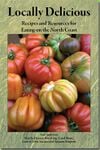By Ann Anderson
I grew up in a large city and knew very little about agriculture. Of course I knew about organic food, but did not pay much attention. I just thought of it as more expensive. My life changed about ten years ago, when I heard a radio interview with Robert F. Kennedy Jr. The subject was hog CAFOs. I had never heard of a CAFO but learned that it meant a Confined Animal Feeding Operation, where animals are jammed together in buildings or in feedlots. The hogs are so close together that they often bite off the tail of the animal in front of them, so tightly confined that they cannot even turn around. The inhumanity to these other living creatures horrified me. I knew the animals were slaughtered for food but I thought they had a decent life until that dark day.
Added to the treatment of the hogs was the fact that hog CAFO operations seriously poisoned both land and water. I learned that a hog produces about three times the waste of a person and that there could be tens of thousands of hogs in one facility. How shocking to learn that these buildings were classified as agricultural facilities and did not come under the same sanitation rules that would be applied to a city. A CAFO might be creating the same amount of waste as a medium-sized city, but was not required to have a sewage treatment plant. The waste was simply dumped on the soil and collected in “ponds.” The waste killed the soil, seeped into aquifers and found its way into rivers, where it polluted drinking water and killed aquatic animals. I have not eaten pork since that day.
I later learned about poultry CAFOs¬—even some of the large “organic” poultry producers were not much better. I now only eat chicken that is raised in pastures. It’s a bit harder to find but some of our local groceries are researching their suppliers carefully and buying from producers that are truly “organic” and humane in their operations. We may also soon have chicken from small local farmers.
Then I read books by Michael Pollan and Paul Roberts. There goes the beef! CAFO-raised beef creates some of the worst environmental damage. We are lucky in our region to have several ranchers who grow their beef on pasture land, where the animals can eat grass. Grass-fed beef has a much lower impact on the environment, uses less petroleum energy and is better for your heath. I still do not eat a large quantity of beef, but I do enjoy a hamburger once in a while. As I read more and saw a few of the films about industrially-produced food, I became more aware of its negative effects. I became serious about fruits and vegetables, as well. I want to avoid eating pesticides. I want to reduce my carbon footprint by buying local and organic. I am not yet and may never be a 100 percent locavore, but I have started my journey. I have more to learn, but it is a journey that I am happy to be on.
Living in this small community, I’ve also learned that I can talk to the owners and managers of the groceries where I shop (at least the local and regional ones), and they listen to me and answer my questions. For convenience, I shop at Murphy’s in Trinidad and the Co-op in Arcata. The butchers are knowledgeable and can tell me where their various meat and fish products come from. They can tell me how the animals were raised and processed. They have listened to and accommodated my requests when I tell them about a meat producer that uses a humane and organic method of production. When I asked the Trinidad Murphy’s manager to put labels indicating which farm local produce came from, he did it! I now know that if I ask questions and make requests, I can help influence what food will be available. I believe that our other local and regional markets would respond in a similar way to the ones at which I shop.
For those of you who wish to learn more about CAFOs, disease and pollution, read on. Otherwise, skip to Industrial Agriculture Adds to Food Insecurity to read about food security or The Industrial Food System Contributes to Obesity. (Okay, I know this is not fun stuff but it is the stuff that changed my behavior.) You can skip to page Where to Buy Local Food in the Six Rivers Region for some suggestions about what we, as individuals, can do to address some of these problems.
